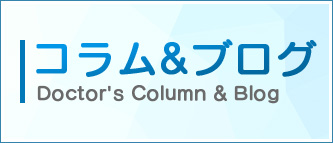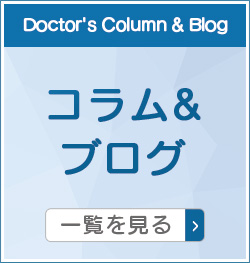昨年の3月にウィーンで開催された第1回の線維筋痛症の国際学会に参加してきましたが、残念なことに日本人医師は私一人でした。第2回の今年は、Covid-19パンデミックのため延期に加えてバーチャルでの開催となりました。
本日の演題のポイントは、線維筋痛症の治療についてですが、それには大きく分けて
1)薬物療法と
2)非薬物療法
とがあります。
薬物療法では、抗うつ薬や抗てんかん薬のような向精神薬の他に、イスラエルを中心に阿片/大麻類の抽出物質や合成類似物質までもが積極的に用いられています。
昨年の第一回国際会議では、特に2)非薬物療法の有効性について関心がもたれていましたが、実施している医療機関は世界中でもわずかなようでした。
2012年カナダ、(1)ドイツ、(2)EULAR(註:欧州リウマチ学会) 2016年ガイドライン(3)などの現在の治療ガイドラインでは、薬理学的手段と非薬理学的手段を組み合わせ、心理療法士、理学療法士など様々な分野の医療専門家の参加を募り、集学的アプローチを実施する必要性がますます強調されるようになってきています。運動は線維筋痛症症候群(FMS)治療のための最もエビデンスに基づいた治療法の一つとして、最高レベルの推奨がなされています。追加される非薬理学的介入としては、認知行動療法(CBT)、運動瞑想療法、水治療法などがあります。
杉並国際クリニックでは、20年間一貫として世界に先駆けて、認知行動療法(CBT)、運動瞑想療法、水治療法などの要素を体系化した水氣道®を創始・展開し、多数の線維筋痛症患者を、しばしば劇的に完治させてきました。したがって、線維筋痛症の治療のために、わざわざ麻薬類似物質の使用については否定的な立場に立っております。
Update on Fibromyalgia Treatment and Guidelines
線維筋痛症の治療とガイドラインの最新情報
Jacob Ablin
(ヤコブ・アブリン)
Tel-Aviv Sourasky Medical Center, Israel
(テル・アヴィヴ スラスキ医療センター、イスラエル)
Summary
While increasing knowledge is accumulating regarding the pathogenesis and underlying neurological pathways of the fibromyalgia Syndrome (FMS) and other centralized pain disorders, this progress has yet to be associated with major breakthroughs in the therapeutic realm. Treating FMS remains a complex and all-too-often frustrating endeavor. While there is evidence indicating that some patients significantly improve, or even cease to fulfill diagnostic criteria of FMS, many patients continue to experience a chronic course with ups and downs and fail to achieve any dramatic improvement after starting treatment. Moreover, while the introduction of three FDA – approved medications, i.e. Pregabalin, Duloxetine and Milnacipran during the first decade of the century, appeared to usher in a new era in the pharmacological treatment of FMS, these three have not been followed by any additional drug – approvals and evidence has since shown that only a relatively small proportion of patients are significantly improved with these treatments as well. This reality has led to an increasing emphasis on the necessity of implementing a multidisciplinary approach, combining pharmacological with non – pharmacological tools and recruiting the participation of healthcare professionals from various areas, e.g. psychotherapists, physiotherapists etc. as recognized by current treatment guidelines such as the 2012 Canadian, (1) German (2) and the EULAR 2016 guidelines (3). Exercise has been recognized as one of the most evidence-based modalities for treating FMS with the highest level of recommendation. Additional non-pharmacological interventions include cognitive behavioral treatment (CBT), movement meditative therapies, hydrotherapy etc.
Among pharmacological treatments, amitriptyline is still often used as first line therapy and has received a strong recommendation from some of the guidelines. Anticonvulsants, which mainly include Pregabalin and gabapentin, are still used with varying rates of success although their use is often limited by side effects. The Serotonin – Norepinephrine reuptake inhibitors (SNRIs), Duloxetine and Milnacipran, also receive mixed – recommendations by various guidelines and appear to have a role in specific patients. Cyclobenzaprine, a centrally acting muscle – relaxant, is recommended by the EULAR (weak for). Selective serotonin reuptake inhibitors (SSRI) are not recommended by EULAR but are recommended by German and Canadian guidelines. In real life, combining SSRIs with amitriptyline is often a practical option, since many patients may present already being treated with SSRI (for depression or anxiety) and adding amitriptyline may be easier than switching to a SNRI under such circumstances.
Strong opioids are generally not recommended for use in fibromyalgia and there are indications that their use may in fact be deleterious, due to exacerbating opioid – induced hyperalgesia. Tramadol, a weak opioid with additional 5-HT and norepinephrine reuptake inhibition activity, does show some efficacy in FMS and is recommended by EULAR and Canadian guidelines. Cannabinoids continue to receive a great deal of attention in the field of FMS, as well as chronic pain in general. There is both theoretical as well as multiple anecdotal indications supporting the use of cannabinoids in the treatment of FMS for both improving sleep as well as combating pain, although this form of treatment cannot be regarded as evidence – base at present and most guidelines remain guarded on the question. Moreover, there is currently no consensus regarding the question which cannabinoid or cannabinoids is optimal for FMS, i.e. THC, CBD, an “entourage” of cannabinoids etc. There is an obvious need for further research on this topic.
In view of the limited success rates of pharmacological interventions, there is growing interest in the prospect of achieving neuroplasticity and reducing central sensitization in FMS, through various techniques. Among the more established of these, one might mention Trans cranial magnetic stimulation (TMS) and Trans cranial direct current stimulation (tDCS), while more experimental approaches include the implementation of hyperbaric oxygen therapy (HBOT) and neuro-feedback. Interesting results have been achieved with these last two modalities and research is ongoing. At present however these modalities remain investigational in nature and are not included in current management guidelines.
線維筋痛症症候群(FMS)や他の中枢性疼痛障害の病態やその根底にある神経学的経路に関する知識が蓄積されつつあるが、この進歩は治療領域における大きなブレークスルーとはまだ結びついていない。
線維筋痛症症候群(FMS)の治療は依然として複雑で、しばしばイライラさせられることが多い。
一部の患者では有意に改善したり、線維筋痛症症候群(FMS)の診断基準を満たさなくなったりすることを示すエビデンスがある一方で、多くの患者は浮き沈みを伴う慢性的な経過を経験し続け、治療を開始しても劇的な改善を達成することができなかった。
さらに、今世紀の最初の10年の間に、プレガバリン(註:リリカ®)、デュロキセチン(註:サインバルタ®)、ミルナシプラン(註:トレドミン®)という3つのFDA承認薬が導入され、線維筋痛症症候群(FMS)の薬理学的治療に新たな時代が到来したかに見えましたが、これら3つの薬はその後も承認されておらず、これらの治療で有意に改善された患者さんは比較的少数にすぎないことが示されている。
このような現実から、2012年カナダ、(1)ドイツ、(2)EULAR 2016年ガイドライン(3)などの現在の治療ガイドラインで認められているように、薬理学的手段と非薬理学的手段を組み合わせ、心理療法士、理学療法士など様々な分野の医療専門家の参加を募り、集学的アプローチを実施する必要性がますます強調されるようになってきた。
運動は線維筋痛症症候群(FMS)治療のための最もエビデンスに基づいた治療法の一つとして、最高レベルの推奨がなされていると認識されている。追加される非薬理学的介入としては、認知行動療法(CBT)、運動瞑想療法、水治療法などがある。
薬物学的治療の中では、アミトリプチリン(註:トリプタノール®)が第一選択薬として使用されることが多く、いくつかのガイドラインでは強い推奨がなされている。
抗けいれん薬(主にプレガバリンとガバペンチンを含む)は、副作用のために使用が制限されていることが多いが、成功率は様々である。セロトニン-ノレピネフリン再取り込み阻害薬(SNRI)であるデュロキセチンとミルナシプランもまた、様々なガイドラインで混合した推奨を受けており、特定の患者には役割があるようである。
中央に作用する筋弛緩薬であるシクロベンザプリン(註:フレクセリル®、わが国では未認証)は、EULARでは(弱い)推奨がなされている。
選択的セロトニン再取り込み阻害薬(SSRI)は、EULARでは推奨されていないが、ドイツやカナダのガイドラインでは推奨されている。
現実的には、SSRIとアミトリプチリンを併用することは、多くの患者がすでにSSRI(うつ病や不安症のための)で治療を受けている場合があり、そのような状況下ではアミトリプチリンを追加する方がSNRIに切り替えるよりも簡単な場合があるため、現実的な選択肢となることが多い。
強力なオピオイドは一般的に線維筋痛症での使用は推奨されておらず、オピオイド誘発性の痛覚過敏を悪化させるため、実際にはその使用は有害である可能性があるとの指摘がある。
5-HTとノルエピネフリン再取り込み阻害作用を持つ弱いオピオイドであるトラマドール(註:トラマール®、ワントラム®)は、線維筋痛症症候群(FMS)に対してある程度の効果を示しており、EULARとカナダのガイドラインで推奨されている。
カンナビノイド(医療用大麻)は、線維筋痛症症候群(FMS)の分野だけでなく、慢性疼痛一般の分野でも引き続き大きな注目を集めている。
線維筋痛症症候群(FMS)の治療に医療用大麻を使用して睡眠を改善し、痛みと闘うことを支持する理論的な説明と複数の逸話があるが、現在のところ、この治療法はエビデンスに基づいたものとは考えられず、ほとんどのガイドラインでは、この問題については慎重な姿勢がとられている。
さらに、どの医療用大麻もしくは医療用大麻群が線維筋痛症症候群(FMS)に最適なのか、つまりTHC(註:テトラヒドロカンナビノール⇒日本では2009年11月20日より指定薬物として規制されている)、CBD(註:カンナビジオール⇒カナダ、米国、欧州で承認されている)、カンナビノイド「近縁薬物」などについては、現在のところコンセンサスがない。このトピックについてのさらなる研究が必要であることは明らかである。
薬理学的介入の成功率が限られていることから、様々な手法を用いて線維筋痛症症候群(FMS)の神経可塑性を達成し、中枢性感作を減少させることへの関心が高まっている。これらの中で、より確立されたものとしては、経頭蓋磁気刺激(TMS)や経頭蓋直流刺激(tDCS)などが挙げられるが、より実験的なアプローチとしては、高圧酸素療法(HBOT)や神経フィードバック療法の実施などがある。これらの最後の2つの治療法で興味深い結果が得られており、研究が進行中である。しかし、現在のところ、これらの治療法は研究段階にあり、現在の管理ガイドラインには含まれていない。
1. Fitzcharles M-A, Ste-Marie PA, Goldenberg DL, Pereira JX, Abbey S, Choinière M, et al. 2012 Canadian guidelines for the diagnosis and management of fibromyalgia syndrome: executive summary. Pain Research and Management. 2013;18(3):119-26.
2. Sommer C, Häuser W, Alten R, Petzke F, Späth M, Tölle T, et al. Drug therapy of fibromyalgia syndrome. Systematic review, meta-analysis and guideline. 2012.
3. Macfarlane GJ, Kronisch C, Dean LE, Atzeni F, Häuser W, Fluß E, et al. EULAR revised recommendations for the management of fibromyalgia. Annals of the rheumatic diseases. 2017;76(2):318-28.
ARCHIVE
- 2024年4月
- 2024年3月
- 2024年2月
- 2024年1月
- 2023年12月
- 2023年11月
- 2023年9月
- 2023年7月
- 2023年5月
- 2023年4月
- 2023年1月
- 2022年12月
- 2022年11月
- 2022年9月
- 2022年7月
- 2022年6月
- 2022年5月
- 2022年4月
- 2022年3月
- 2022年2月
- 2022年1月
- 2021年12月
- 2021年11月
- 2021年10月
- 2021年9月
- 2021年8月
- 2021年7月
- 2021年6月
- 2021年5月
- 2021年4月
- 2021年3月
- 2021年2月
- 2021年1月
- 2020年12月
- 2020年11月
- 2020年10月
- 2020年9月
- 2020年8月
- 2020年7月
- 2020年6月
- 2020年5月
- 2020年4月
- 2020年3月
- 2020年2月
- 2020年1月
- 2019年12月
- 2019年11月
- 2019年10月
- 2019年9月
- 2019年8月
- 2019年7月
- 2019年6月
- 2019年5月
- 2019年4月
- 2019年3月
- 2019年2月
- 2019年1月
- 2018年12月
- 2018年11月
- 2018年10月
- 2018年9月
- 2018年8月
- 2018年7月
- 2018年6月
- 2018年5月
- 2018年4月
- 2018年3月
- 2018年2月
- 2018年1月
- 2017年12月
- 2017年11月
- 2017年10月
- 2017年9月
- 2017年8月
- 2017年7月
- 2017年6月
- 2017年5月
- 2017年4月
- 2017年3月
- 2017年2月
- 2017年1月
- 2016年12月
- 2016年11月
- 2016年10月
- 2016年9月
- 2016年8月
- 2016年7月
- 2016年6月
- 2016年5月
- 2016年4月
- 2016年3月
- 2016年2月
- 2016年1月
- 2015年12月













